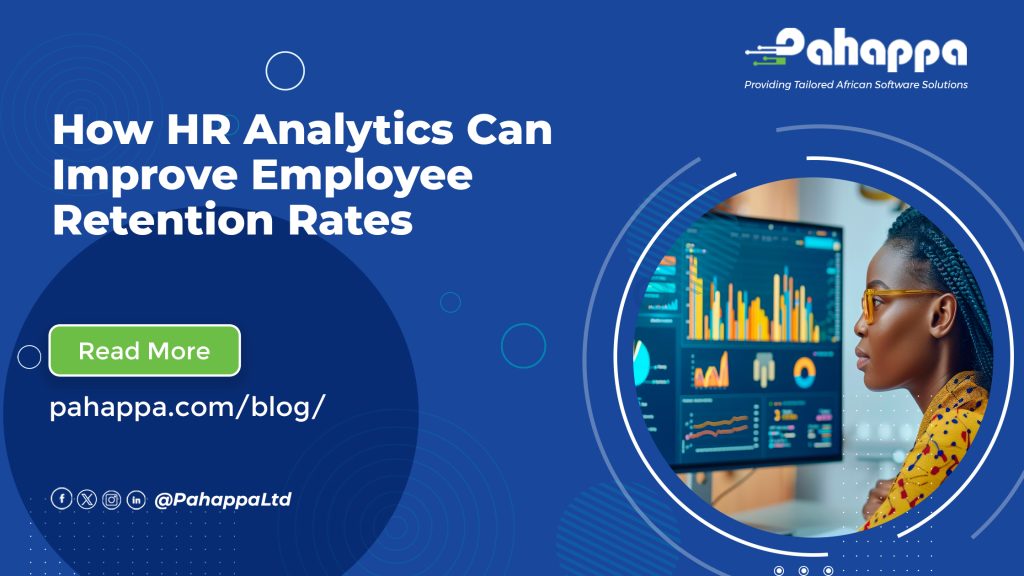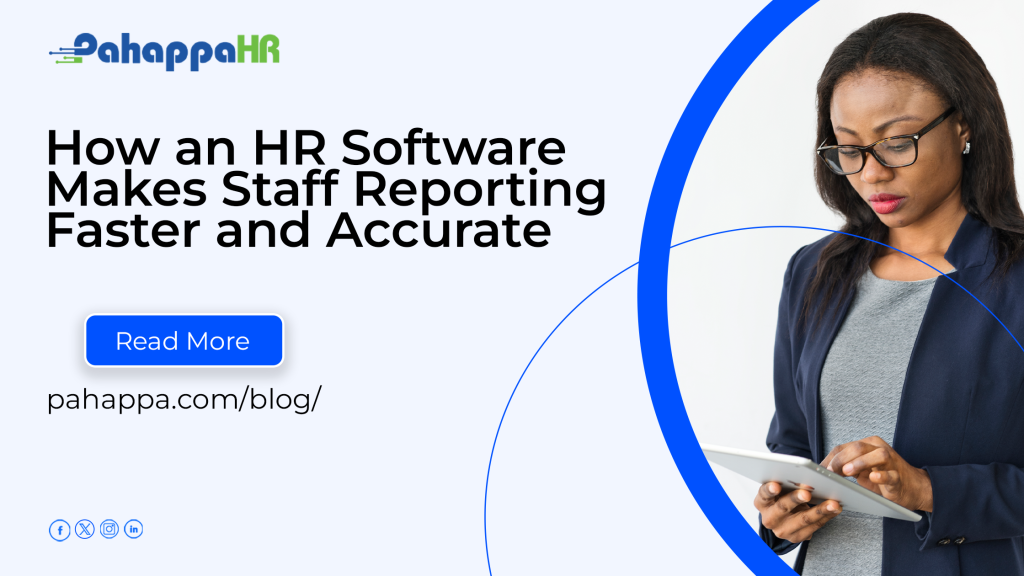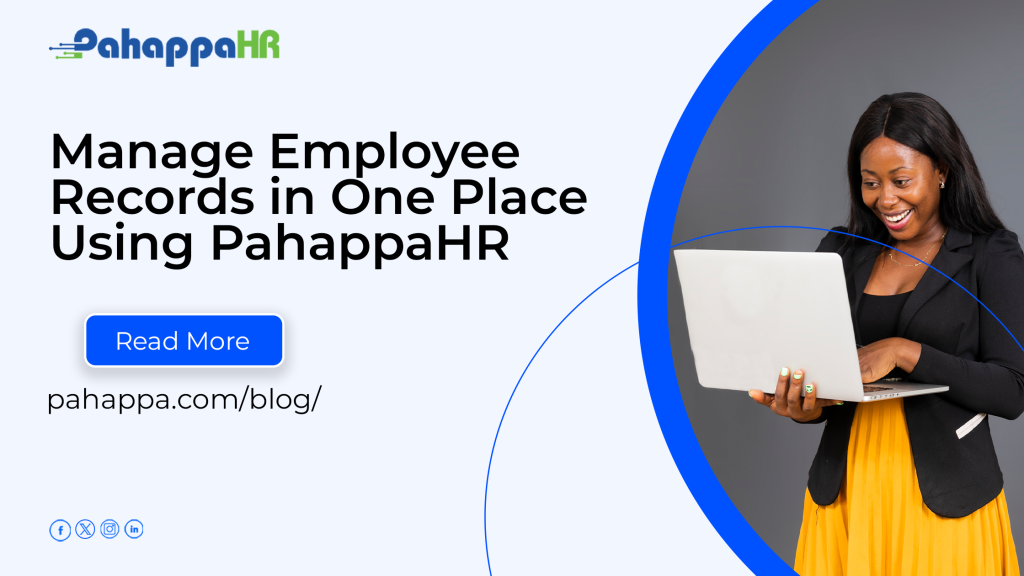What if you could foresee when your top employees might leave and take steps to prevent it? Employee retention has become a defining factor for growth and success in today’s competitive business environment. Every time a skilled team member walks out the door, companies lose not only productivity but also morale and institutional knowledge.
This is where HR analytics can help. By using employee data to gain useful insights, HR analytics enables organizations to understand what keeps employees engaged, satisfied, and loyal. For companies with 10 or more workers, tools like PahappaHR make it simple to analyze workforce trends and create plans to keep employees motivated and committed.
What Is HR Analytics and Why Does It Matter for Retention
HR analytics means collecting and analyzing data about employees to make better choices about hiring, training, and keeping staff. It helps answer questions like:
- “Why are employees leaving?”
- “Which departments have the highest turnover?”
- “What can we do to improve satisfaction?”
In Africa, where attracting and keeping talent is becoming harder, HR analytics helps organizations lower turnover costs, follow labor laws and keep a stable, productive workforce. When companies use data to guide their HR decisions instead of guessing, they can respond more quickly, create fairer policies, and build workplaces where people want to stay.
Core HR Analytics Metrics That Drive Employee Retention
If you want to improve employee retention, track these important metrics:
Employee Turnover and Retention Rate
This tells you the percentage of employees who leave compared to those who stay. Tracking this by department, role, or time can help you find areas with high turnover and understand why it’s happening.
Absenteeism and Leave Patterns
Look for frequent unplanned absences or spikes in leave requests. These can indicate disengagement, burnout, or stress. Recognizing patterns (like after major projects or before performance reviews) allows you to address issues early.
Performance and Productivity Metrics
Analyze performance reviews, productivity levels, and goal achievement. Identify employees whose performance is declining or stagnant so you can support them before they decide to leave.
Payroll Accuracy and Compensation Equity
Pay issues, like mistakes in salary or unfair bonuses, can lead to dissatisfaction. Use payroll data and benchmarks to ensure fairness in compensation, which can boost retention.
Engagement and Feedback Scores
Use pulse surveys, sentiment scores, and feedback from exit interviews to understand what your employees are feeling. This qualitative data, combined with analytics, helps you learn what drives your company’s culture and improves employee loyalty.
Recruitment Metrics (Time-to-Fill/New Hire Turnover)
If new hires leave quickly, it usually means there was a poor fit or a weak onboarding process. Tracking how long it takes to fill a job and how many new hires leave soon can help you improve hiring and retention efforts.
How HR Analytics Helps Improve Employee Retention
Predictive Insights & Early Warning
HR analytics can identify employees who may leave based on signs like lower engagement, more absences, or performance issues. By recognizing these patterns early, HR or managers can step in with support, career discussions, or recognition.
Better Onboarding, Development & Career Pathing
Analytics help determine which employees are thriving and which are at risk due to lack of opportunities. If someone stays in the same role too long without moving up, analytics will highlight this. Then, organizations can offer development programs or new projects to provide growth and prevent employees from feeling stuck.
Holistic Workforce View
By combining data on leaves, pay, performance, and engagement, HR gains a complete view of the employee experience. For example, high leave and low performance may signal burnout, while pay issues can damage trust. Having all this data together allows for specific support when needed.
Fairness, Transparency & Trust Building
When HR systems efficiently manage leave approvals, payroll, and performance, employees feel there is fairness. This sense of trust is crucial for keeping employees. Analytics can also reveal and fix any unfair practices, like delays in approving leave for certain teams.
Strategic Workforce Planning
Using analytics for retention helps HR prepare for future needs. They can identify which roles might need replacements, which teams might face high turnover, and where skills are lacking. This proactive approach helps the business plan resources effectively instead of reacting after losing employees.
How PahappaHR Improves HR Analytics for Employee Retention
PahappaHR is a complete HR software solution designed for African businesses. It helps you use data to keep employees longer.
Key Features That Help Retention
- Payroll Management: PahappaHR offers accurate and automated payroll, ensuring employees get paid correctly and on time. When pay is reliable, it builds trust and reduces turnover.
- Leave Management: The system provides clear processes for applying, approving, and tracking leave. This makes sure that employees feel their time-off requests are treated fairly. Data on leave patterns helps identify burnout or imbalances.
- Performance Management & Analytics Dashboard: You receive visuals, trends, and reports on performance, retention risks, leave data, and payroll patterns. This helps HR address issues before they get worse.
Conclusion
HR analytics is changing how organizations keep their most important asset, their people. By using tools like PahappaHR, businesses can automate HR tasks, ensure they follow the rules, improve accuracy, and make choices based on data that boost employee loyalty. Retaining employees isn’t just about keeping them, it’s about helping them thrive. Book a free PahappaHR demo to start your journey to smarter, people-focused HR management today.






